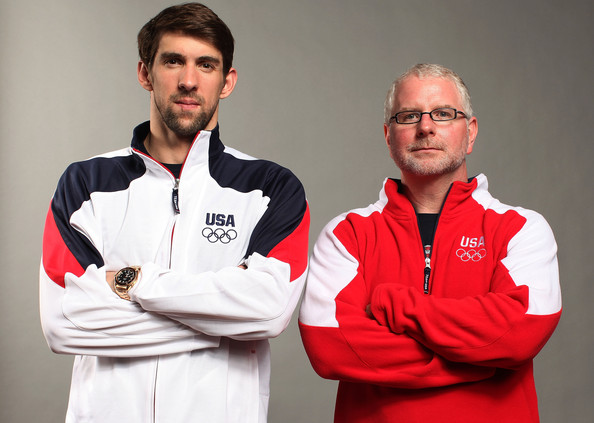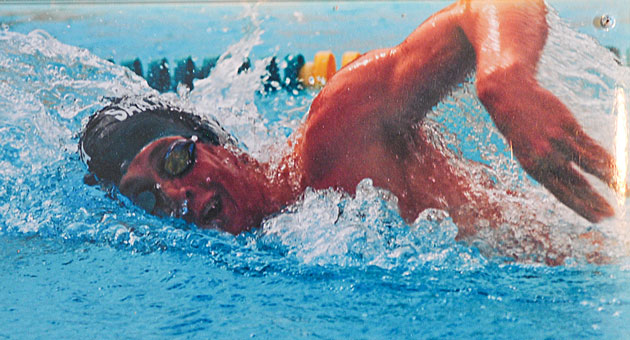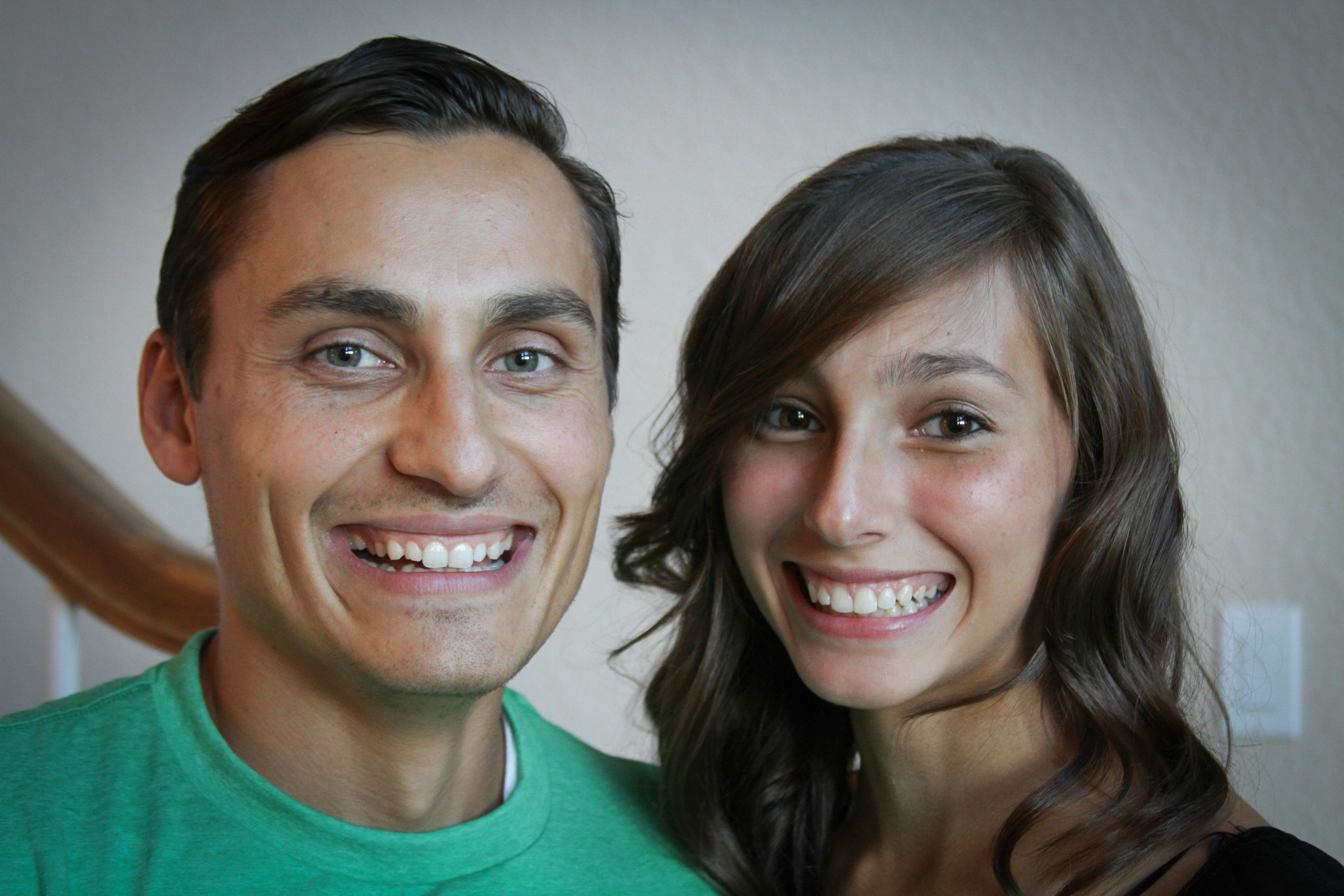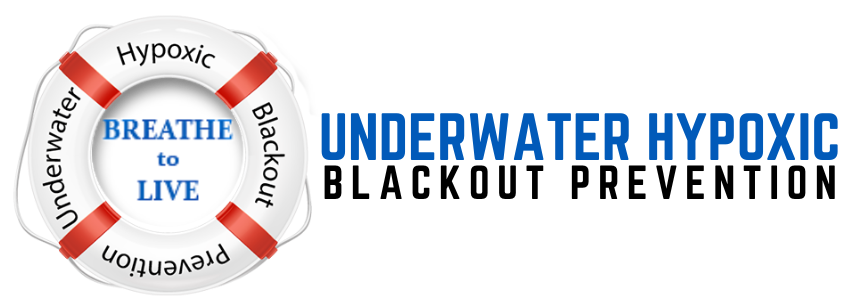Shallow Water Blackout from prolonged breath-holding is mentioned in this CBS special on relatively unknown causes of drowning. Please view here.
Coach Bob Bowman to Film Coach's Training Video and PSA for Shallow Water Blackout

The USA Swimming Foundation and The Michael Phelps Foundation are partnering with Coach Bob Bowman (coach of Olympic medalist Michael Phelps) in the production of an educational video and PSA on Shallow Water Blackout. The budget in place will enable them to make a professional short video and a 30 second PSA that will be suitable for television. Octagon, an international Sports and Entertainment firm will coordinate production and USA Swimming will also produce posters about SWB that will be distributed to every club in the country. Filming is scheduled to begin in mid June, and will include a medical expert and graphics which will give concise points about understanding and preventing SWB.
The most important aspect of this video is that they plan to include it in the Red Cross Safety Training for Coaches course which must be taken by EVERY coach in America to be certified as a USA Swimming Coach. There will now be a way to guarantee that every coach on deck has seen this information in a format that will maximize learning and emphasize prevention.
Coach Bowman has also been confirmed as the keynote speaker for the National Drowning Prevention Alliance Educational Conference in Dallas next March. This is an opportunity to discuss SWB with a wider range of aquatic professionals including learn to swim, lifeguarding and recreation. You can view his recent talk on SWB here.
Star Water Polo Player Drowns
 "Shallow Water Blackout" May Have Contributed to Death of Water Polo Player Nick Johnson.
"Shallow Water Blackout" May Have Contributed to Death of Water Polo Player Nick Johnson.
A local effort is under way to raise awareness about the condition, caused by hyperventilation and holding one's breath for a prolonged period of time.
Just how does a young, healthy, competitive water polo athlete drown in a swimming pool? The family of 19-year-old Nick Johnson — and many in the Santa Barbara community — have been struggling to understand his tragic death, and attention is now being focused on a condition called "shallow water blackout," which puts swimmers and divers in danger of fainting underwater...click to continue reading.
Olympian Swim Coach Bob Bowman Speaks About SWB
Bob Bowman is best known for coaching the 18-time Olympic gold medalist Michael Phelps. Together with Cathy Bennett he discusses the very serious topic of Shallow Water Blackout. Even experienced athletes can become a victim of this tragic phenomenon where oxygen is deprived from a swimmer's system during practice which can lead to drowning. This insightful presentation will help to prepare even highly experienced coaches to provide a safer environment for their swimmers. Please visit this link to view this free presentation.
A Mother Tells the Dramatic Story of Her Daughter's Near Drowning
 Jeremiah and Salena Gonzales
Jeremiah and Salena Gonzales
by Amanda Gonzales
It was a hot August day in Key West, Florida. We were in the pool swimming around, enjoying the live band. We decided to take one last trip that summer and Key West seemed to be the perfect spot. It was a super hot weekend. We had been swimming all summer. Hopping into the pool was nothing new. Salena, 14 at the time, was competing with her father (Jeremiah) as they had all summer long. No matter what pool they were swimming in they competed to see who could swim underwater back and forth the most. She had gotten really strong and took every moment when not competing to try to hold her breath a little bit longer. She had just proven a few nights before that she could hold her breath for just a little over three minutes. So here's how it worked; everyone who wanted to compete could. The rules were simple - swim back and forth as many times as you could and you earned bragging rights that day or until someone else beat you. To push the competition to the next level Jeremiah decided it would be a good idea to hyperventilate before his turn and that would give him an edge on everyone else. Salena was soon to follow suit.
This hot day in Key West wasn't much different than the others that summer. The only real difference was the only ones who wanted to play this day were Salena and Jeremiah. It wasn't a very big pool but it was full of people. So the competition began. Jeremiah went, Salena went immediately after Jeremiah, and so on and so forth. This went on for a good bit without much rest in between.
We had a long ride home and still had to pack our room, and the other children were done swimming for the day. I told Jeremiah we should get going. He stated Salena wanted to go one more time. That was fine, it gave me time to gather the rest of the kids. I was on the side of the pool gathering everyone's goggles when Jeremiah turned and tapped me and said look at this. I no longer had my goggles on and what he was pointing to was under the water. I ignored him. He then again, more persistent this time said to look. Frustrated, I put my goggles on and looked under the water. I came up and said "what is she doing?" Jeremiah, replied "she looks like she is dancing," I immediately started swimming to Salena. It was only a short distance from where I started but it felt like slow motion. I knew something was wrong. She was thrashing with her fist clenched and her goggles we suctioned to her face so tightly and her eyes were closed. I signaled to Jeremiah who was right behind me and we began to pull her to the side of the pool. The pool was 5.5 feet deep. Since we are not tall people that changed the game a bit. We struggled to get her up. I jumped out of the pool and began to pull as Jeremiah pushed with each time. She slipped from us. I screamed for help and a gentleman came over and helped push her up. We dragged her a few feet from the edge of the pool. She was foaming at the mouth, her lips were purple and she was shaking. She was not breathing. I was able to get a guy to call 911 for us as Jeremiah started performing CPR. I then turned and made sure the other children were out of the pool. I stood and watched my husband and another woman perform CPR on her as she lay there lifeless. After a few minutes she took a breath. They sat her up and as I sat in front of her she stared at me with confusion, as a child does who is sleep walking and doesn't know how they got to the kitchen. I asked her a few questions, and got blank stares in return. She then started gasping for air and crying that she couldn't breath. Jeremiah was behind her, I and the woman who helped with CPR were in front of her. Salena started to get angry that we were so close to her and started shouting to get off of her. She was beginning to panic. The woman and I looked at each other and said "we can't let her get up!" Salena then started to scoot closer to the edge of the pool and we all began to pull her back. She was dazed and confused and started to express how sick to her stomach she was feeling. She began to dry heave. The man who called 911 graciously gave her his chair. Moments later the paramedics came and hooked her to some oxygen and hooked her to the gurney. The paramedic asked some questions and knew right away what had happened. She told us that she'd had a Shallow Water Blackout. She explained a little to us what that meant. Then we headed off to the ER.
Jeremiah later said he remembers her swimming her last lap and two ladies had walked in front of her. It appeared as if Salena come up for a breath and then went back under the water, which was typical for her to do. When she didn't come back up is when he then went under to see what she was doing and that's when he came up and wanted me to look at her.
Salena says, she remembers getting to her last lap and knew she was about to win but had to stop for the ladies and that's the last thing she remembers before we were all surrounding her and asking her questions.
In the ER she didn't fully understand what had happened to get her there. I had to tell her that she blacked out under the water.
We later learned that the hyperventilation was a huge contributing factor in this. Her brain wasn't able to regulate her CO2 levels properly.
The Dangers of Shallow Water Blackout in Get Out There Magazine
Please click here to read a fantastic article by Dr. Tom Griffiths and Rachel Griffiths in Canada's Get Out There Magazine.
"How Blackout Squeezed My Heart"
A mother shares the story of how her two sons experienced blackouts simultaneously why diving together. Please read this story here.
Recent Article Highlights Hypoxic Training and its Risks
A recent article by Shawn P. DeRosa, J.D.Manager of Aquatic Facilities & Safety Officer for Intercollegiate Athletics analyzes the risks of hypoxic training. Please read it here.
Deep Water Diver Dies After Trying For Record
LONG ISLAND, Bahamas — As Nicholas Mevoli lay on his back, floating in the azure sea, attempting to relax, his exhales were audible. The countdown had begun, and he prepared to dive into Dean’s Blue Hole, hoping to reach 72 meters on a single inhalation, with no fins or supplemental oxygen. He began sipping the air, attempting to pack as much oxygen in his lungs as possible...Continue Reading
Tim Winton of the New York Times Writes About Shallow Water Blackout
Tim Winton of the New York Times discusses the dangers of SWB and his experiences with the phenomenon: The Thrill of Breathlessness By TIM WINTON Published: November 22, 2013
FREMANTLE, Australia — NEWS of Nicholas Mevoli’s death during a free-diving competition at Dean’s Blue Hole in the Bahamas earlier this week has shocked the sport’s devotees and touched many of us who spend time in the water holding our breaths. Doubtless some readers will have been puzzled as to why a young man put his life at such unnecessary risk in the first place.
Apnea or breath-hold diving is hardly a mainstream affair. Most will know of it only through the 1988 Luc Besson film, “The Big Blue,” which fictionalizes its greatest and most eccentric exponent, Jacques Mayol. By means of a weighted sled or under his own power, the free diver strives to achieve depths and breath-holding times unmatched by rivals, and having done so must surface unassisted and in good health. Like long-distance swimming, free diving is essentially an endurance art that persists at the very margins of organized sport, but unlike other extreme activities like base-jumping or big-wave surfing, it isn’t much of a spectacle and the spoils of success are modest....Click here to continue reading.

